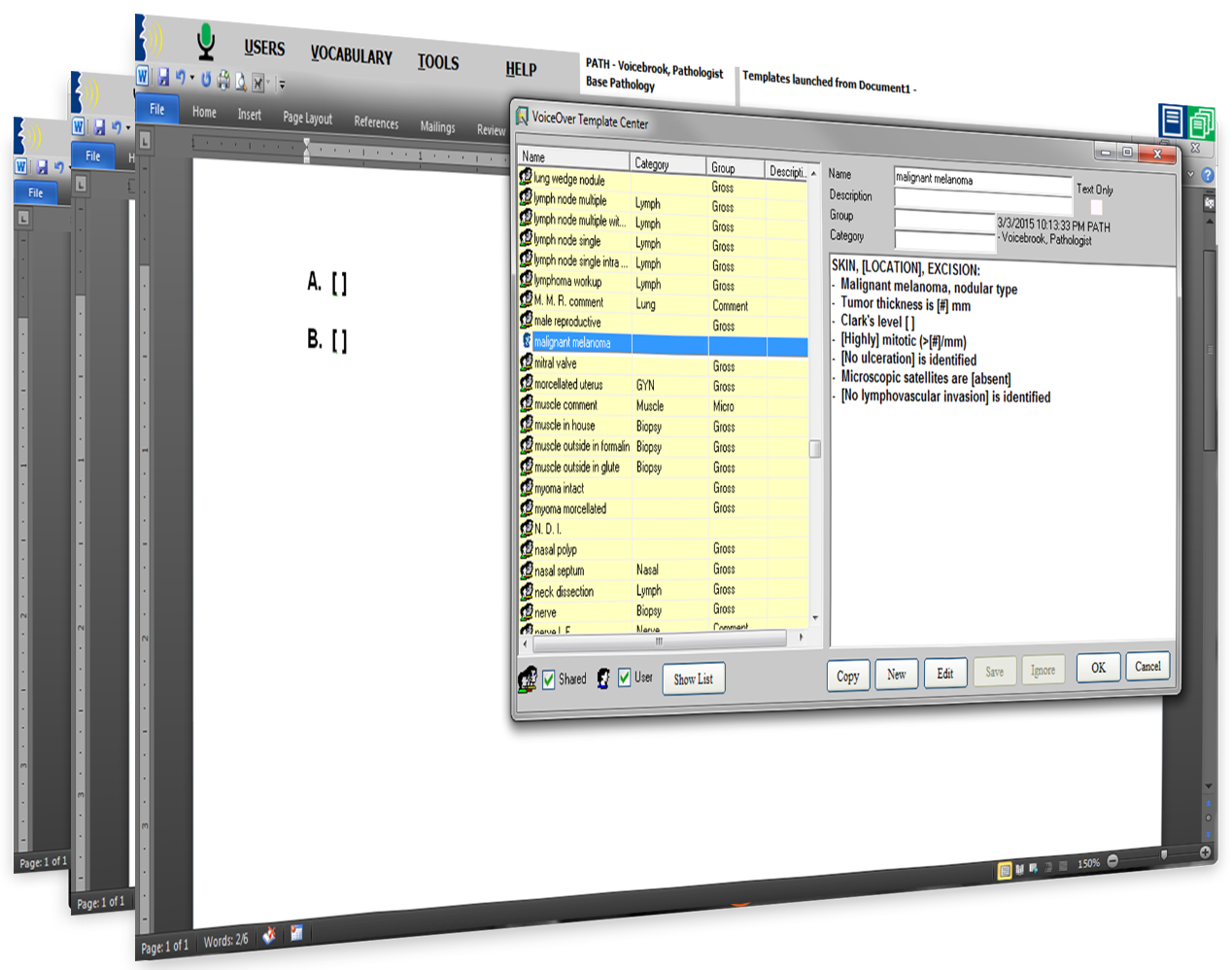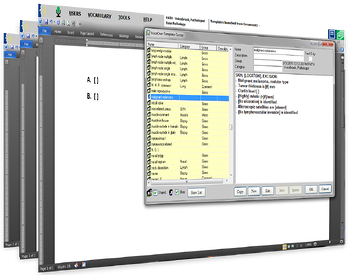3 min read
Five Things to Know When Preparing to Create VoiceOver Templates
Voicebrook Friday June 19, 2015

In our recent blog article, “Best Practices for Creating Quick and Accurate Pathology Templates” we describe the benefits and best practices for creating pathology reporting templates. In this blog post, we will expand upon the foundational understanding provided in that first post, and dig into some other important and more advanced concepts when creating pathology templates with VoiceOver.
1. Shared vs. User VoiceOver templates
Shared VoiceOver templates (also called global templates) are templates that are available for all users. Shared templates help organizations standardize formatting and structure and are easier to manage. Prior to go-live, existing standardized templates will be converted to shared templates and made available for all users. Only your site administrators will be able to modify these global templates.
By contrast, user templates are created by individual users to match their style of reporting or their specialty. If organizations allow individuals to maintain their own templates then we’ll train each user how to create templates during their one-on-one VoiceOver training. Individual templates are only available to that individual user. If your site administrator believes that those individual templates can benefit the group, then they can convert a user template into a shared template.
2. Variables
There are many different types of templates ranging from short phrases to multiple paragraphs that have many fields to input report variables. Some templates might just be canned text (a comment or phrase said often and it never changes). Others might have a paragraph that is always the same except for some descriptive information that varies from report to report. The variable information will be represented in the template with a placeholder. This also allows for quick navigation by voice, keyboard, or mouse.
If a majority of the time that variable text is the same then the default can be part of the placeholder. Users can easily navigate and accept the default or dictate another word or phrase. For example, if a specimen is often sent "in formalin" but it may also be prepared in other fixatives then the default can be set to 'in formalin' but still prompt the user to confirm the fixation so they do not select the default by mistake. Our recommendation is to always include the default in these situations so when the exception comes up, it is not missed.
3. Making your template names "voice friendly"
Some sites may already have canned text templates that use a code as a name. A majority of the time we will use that naming convention. However, it is best to avoid codes that are not easily recognized by the speech recognition software. For example, you might have one template with a name of 'DEGC' and another 'DEGE'. If we kept those names, users might experience recognition errors. This would cause the wrong template to open, because the template names sound very similar. When talking to someone over the phone, it's standard practice to use the phonetic alphabet when providing a string of letters. For example, to say something like "C as in Charlie". If you feel when saying a template name you’d be tempted to use the phonetic alphabet, then that name is not an ideal choice for VoiceOver templates. Common acronyms like 'HPV' and numbers work without issue. Using words for template names instead of abbreviations is always a better choice.
4. Send us your templates in an Editable format
One best practice that will save everyone a huge amount of time is to provide existing templates in an editable version. Since Voicebrook converts the templates into VoiceOver templates, being able to do that without having to manually type the templates out will prevent typographical mistakes and allow for a faster turnaround time. We understand that this is dependent on where your templates currently live, but editable is always preferred.
5. Don't try to fit all scenarios into one template
One thing we see our customers struggle with is trying to make one template work for every situation. This can often lead to having too many variable fields which could make users less efficient. The most efficient users will often have multiple templates for the same specimen type. In the simplest of examples, consider biopsies. Often, a biopsy template may start off with something like:
"Received in formalin and labeled "biopsy" are two tan-pink fragments... "
In this example, the label and number of fragments are the variables. The number of fragments changes the plurality of the words around it. Instead of having to dictate "are two" or "is one," create an additional template. Having multiple templates will decrease dictation time.
They might look like:
- Biopsy One = "Received in formalin and labeled "biopsy" is one tan-pink fragment... "
- Biopsy Two = "Received in formalin and labeled "biopsy" are two tan-pink fragments... "
- Biopsy Multiple = "Received in formalin and labeled "biopsy" are multiple tan-pink fragments... "
Hopefully these five tips will help guide you as you start to gather template information for your site. As always, our project team will be there every step of the way to help guide you through making the best decisions about how to build VoiceOver Templates that are most effective for you.
If you currently don't use VoiceOver for your Pathology reporting, please feel free to contact us to hear more.


